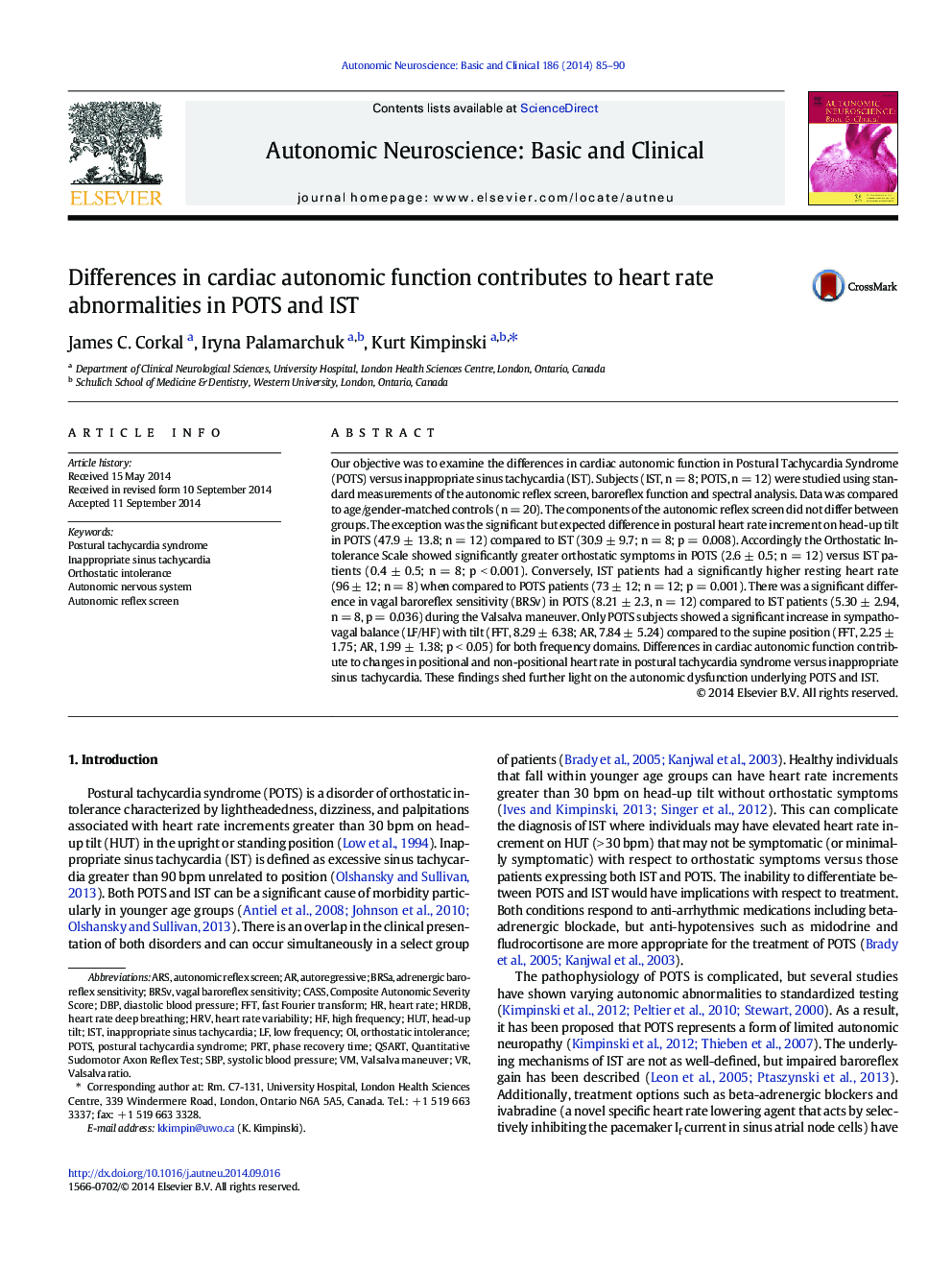| Article ID | Journal | Published Year | Pages | File Type |
|---|---|---|---|---|
| 3034660 | Autonomic Neuroscience | 2014 | 6 Pages |
•Increased adrenergic BRS, reduced HRV, and rapid DBP overshoot were seen in IST.•Findings in IST reflect increased sympathetic activity and non-positional tachycardia.•POTS revealed postural mediated reduction in HRV and increased sympathovagal balance.•These findings in POTS correspond to postural tachycardia and orthostatic symptoms.
Our objective was to examine the differences in cardiac autonomic function in Postural Tachycardia Syndrome (POTS) versus inappropriate sinus tachycardia (IST). Subjects (IST, n = 8; POTS, n = 12) were studied using standard measurements of the autonomic reflex screen, baroreflex function and spectral analysis. Data was compared to age/gender-matched controls (n = 20). The components of the autonomic reflex screen did not differ between groups. The exception was the significant but expected difference in postural heart rate increment on head-up tilt in POTS (47.9 ± 13.8; n = 12) compared to IST (30.9 ± 9.7; n = 8; p = 0.008). Accordingly the Orthostatic Intolerance Scale showed significantly greater orthostatic symptoms in POTS (2.6 ± 0.5; n = 12) versus IST patients (0.4 ± 0.5; n = 8; p < 0.001). Conversely, IST patients had a significantly higher resting heart rate (96 ± 12; n = 8) when compared to POTS patients (73 ± 12; n = 12; p = 0.001). There was a significant difference in vagal baroreflex sensitivity (BRSv) in POTS (8.21 ± 2.3, n = 12) compared to IST patients (5.30 ± 2.94, n = 8, p = 0.036) during the Valsalva maneuver. Only POTS subjects showed a significant increase in sympathovagal balance (LF/HF) with tilt (FFT, 8.29 ± 6.38; AR, 7.84 ± 5.24) compared to the supine position (FFT, 2.25 ± 1.75; AR, 1.99 ± 1.38; p < 0.05) for both frequency domains. Differences in cardiac autonomic function contribute to changes in positional and non-positional heart rate in postural tachycardia syndrome versus inappropriate sinus tachycardia. These findings shed further light on the autonomic dysfunction underlying POTS and IST.
